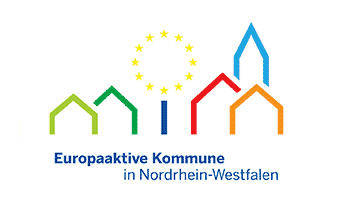Inhalt
Historischer Rundweg - Board 15
Weeze’s Jewish Community
The history of the Jewish Community in Weeze is shaped by the Koopmann and Devries families.
The first Jews in Weeze can be traced back to the 17th century. During the period of the French occupation (1794 – 1814) they all received national civic rights. The few Jews in Weeze were active as cattle traders, butchers or as merchants. In 1812 five other Jews lived along with the butcher’s family of David Koopmann in the town. Near the end of the 19th century the number rose to 25 and by 1938 sank to 13.
Social participation/integration
During the time of the Empire of the Weimar Republic (1871 to 1933) the integration of the Jews, also of those in Weeze, was largely consummated. They took part in the social activities of the community and were members of clubs, associations and institutions. The fact that the respected colonial and manufacture trader Leonhard Koopmann, as the „representative of the israelite community“, together with Mayor Tenhaeff, Baron von Vittinghoff-Schell and the protestant and catholic priests inaugurated the memorial on the Cyriakus Square in 1929 can be seen as a sign of their good social integration. Weeze’s Jews served during the Franco-German War, as well as in the First World War and they too had losses to lament. David Koopmann was badly wounded in Spichern in 1870, Albert Devries fell in 1918 in France and his brother Max, who was seriously wounded and had to have a leg amputated, was awarded the Iron Cross.
Nazi-persecution
The small group of Weeze Jews was almost totally wiped out in the Nazi-period. A few were able to escape in 1938 by emigrating overseas, such as the cattle trader Ludwig Devries with his wife Jenny, their sons Horst and Albert, as well as his sister Helene. The cattle and horse trader Heinrich Koopmann fled in 1938 with his wife Paula and daughters Marion and Rosemarie via the Netherlands to Belgium. From there in 1942 they were deported to the concentration camp of Auschwitz and murdered. Cattle trader Simon Hertz was taken into custody in 1942 and locked-up in the police station in Weeze. He committed suicide in order to avoid deportation. In 1942 Leonhard Koopmann together with the Max Devries family was sent to the concentration camp Theresienstadt, where he died due to a poor diet and weakness.
Max Devries
Cattle trader Max Devries served in the cavalry on the eastern and western fronts during the First World War, where he was seriously wounded and lost a leg. He was a very homely-person and just like his sister Helene active in Weeze’s clubs and associations. After the marriage to Julie Hartoch, daughter Edith (later married name Bader) was born in 1935. After the November pogroms in 1938 the persecution of the Jews increased. Max Devries however refused to emigrate. He had always felt like a German and a Weeze citizen. In 1942 the Devries Family was deported to the concentration camp Theresienstadt. Jaundice and typhus were widespread there. In contrast to most of the other survivors, the family, after liberation of the camp, decided to return to its home in Weeze. With a farming friend Max Devries resumed and continued his work as a cattle trader.
He always acted under the principle: never repay evil with evil. He now helped many of his Weeze citizens as a witness for the defence in the “civilian courts” of the de-nazification trials. As a member of the Regional Council between 1945 and 1946 he looked out for the interests of the Municipality of Weeze. His descendants, the four children from Edith Bader-Devries, grew up in Weeze.
Commemoration
Since 2002 the Municipality remembers the Weeze Jews, who were persecuted and murdered during the national socialist terror regime from 1933 to 1945, via a memorial plaque (location: Petrus-Canisius-School) designed by Karl-Heinz Uppendahl.
In 2009 the Cologne Artist Gunter Demnig placed so-called „Stolpersteine“ (tripping stones) in front of the last addresses of the murdered Weeze Jews. These paving stones are embossed with a brass plate engraved with the names and fates of the victims.
The sisters Marion and Rosemarie Koopmann lived with their parents Heinrich and Paula in Kevelaerer Straße 32 (today Bakery Reffeling), around 1935.
Ludwig Devries with his wife Jenny (née Gerson, from Aldekerk), his sons Horst (left, later George) and Albert (right), 1940’s.
"Stolpersteine" (tripping stones) are placed in front of Kevelaerer Straße 32 on December 1st, 2009. From left to right: Gunter Demnig, Edith Bader, Mayor Ulrich Francken.
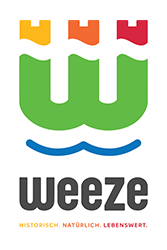

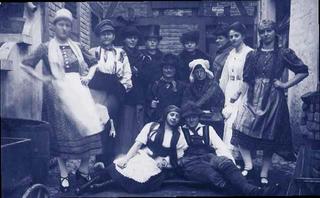
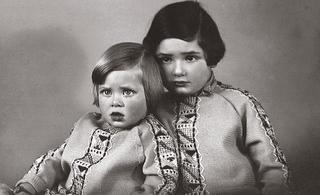
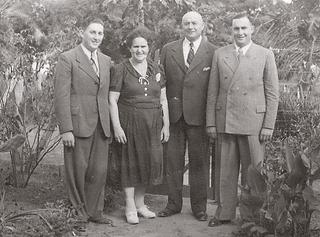
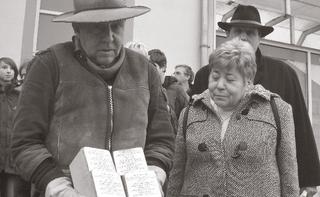
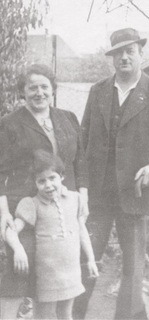
 02837 9100 (Zentrale)
02837 9100 (Zentrale) info@weeze.de
info@weeze.de Facebook
Facebook